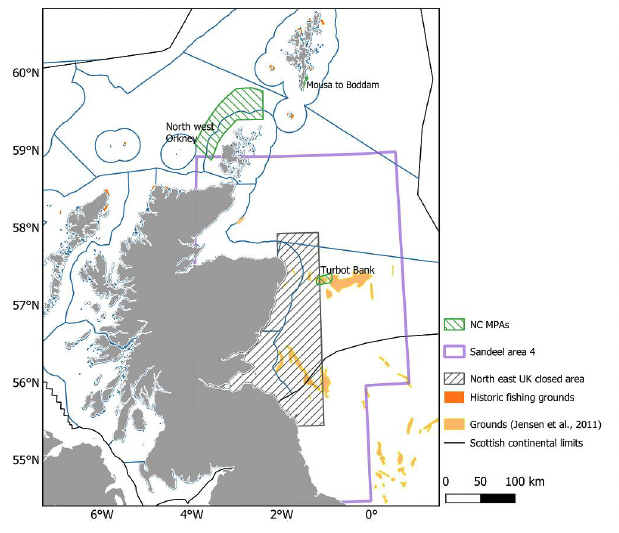Sandeel fishing consultation: draft partial business and regulatory impact assessment
The draft partial business and regulatory impact assessment for the consultation on proposals to close fishing for sandeel in all Scottish waters.
Sandeel management
Sandeel is a jointly managed stock between the UK and the EU (European Union). Under the UK/EU trade and cooperation agreement (TCA), the UK has a 2.97% share and the EU a 97.03% share of the parties' combined sandeel quota in 2023. The Total Allowable Catch (TAC) is set during the in-year consultations, followed by the ICES advice release. As a result of the negotiations this year, the TAC has been set at 194,367 tonnes[5] which is 3% lower for areas 1r and 4[6] (UK waters) than the ICES advice.
Under the TCA and during a transition period lasting until 30 June 2026, the UK and the EU have full mutual access to their respective exclusive economic zones (EEZs) (i.e. waters adjacent from 12 – 200 nautical miles); as well as access to specific English, Welsh and Channel Island waters in the 6-12 nautical mile area. Sandeel is an important fishery to some EU member states, in particular Denmark, who regularly fish the stock in UK waters in May and June.
EU sandeel fishery
Denmark is the largest shareholder, holding 96% of the EU quota. From 2020-22, Denmark's total quota for North Sea sandeel has been on average 128,546 tonnes, worth approximately £36 million based on latest (2020) Scottish prices. 35% of this quota has been allocated to areas almost entirely within UK, primarily Scottish, waters (sandeel areas 4 and 3r); the remaining 65% has been allocated to areas either straddling UK and EU waters, or in EU waters exclusively (sandeel areas 1r and 2r, and 6).
UK sandeel fishery
In the case of UK vessels, the stock has historically been targeted primarily by one UK vessel, although no quota has been issued to UK vessels for sandeel since 2021, and a major sandeel fishing area in the North Sea has been closed to UK and EU vessels since 2000, except for a limited monitoring fishery in some years.
Current area closure for sandeel
There is a sandeel closure in place in sandeel management area 4 (Figure 1). This area extends along most of the east coast of Scotland, as well as some of the northeast coast of England, and is exclusively within UK waters. Figure 1 also shows three Nature Conservation Marine Protected Areas (NC MPAs), which are the 'Turbot Bank', 'North west Orkney' and 'Mousa to Boddam'.
The existing closure was included in EU regulations and has been retained in UK law[7]. The closure was intended to benefit predators dependent on sandeel by avoiding a localised sandeel depletion. Seabirds were the focus of this, however all sandeel predators were considered [8].
The closed area has been in place since 2000, following requests from the UK to the EU to establish a moratorium on fishing and advice from ICES, which stressed the importance of sandeel for a number of potential sensitive seabird colonies in the area[9].
The current area closure, which has been retained in UK law, allows for "fisheries for scientific investigation", this allowance has previously been used by Denmark. In recent years, Denmark have requested and received this authorisation, and have therefore fished in the area for scientific investigation only.

Contact
Email: sandeelconsultation@gov.scot
There is a problem
Thanks for your feedback